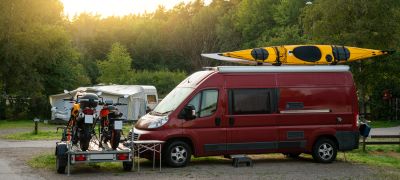
The California Air Resources Board (CARB) is beginning the rulemaking process to implement an executive order signed by California Governor Gavin Newsom in 2019 to ban gasoline-powered vehicles in the state by 2035.
At first, only motorhomes or tow vehicles under 8,500 pounds, such as some Type B motorhomes, would be impacted, RVIA said.
The rules dictate phasing in increasing percentages of zero-emission vehicles (ZEV) in the passenger car and light-duty truck markets to reach 100 percent ZEV by model year 2035. Initial vehicle bans would include those with gross vehicle weights of less than 8,500 pounds.
Medium-duty (8,501 to 14,00 pounds) and heavy-duty trucks (over 14,001 pounds) would not be subject to the same zero-emission rules until 2045.
Other rule portions would impose stricter emission standards for passenger cars, light-duty trucks and medium-duty vehicles beginning in model year 2026. The stricter standards would cover all vehicles, including motorhomes and tow vehicles, weighing 14,000 pounds or less.
The new rules will not ban sales of used vehicles with internal combustion engines. However, a phase-in would begin in model year 2026, with 35% of California new car and light-duty truck sales required to be ZEV. By model year 2030, the requirement rises to 68% before full adoption in model year 2035.
RVIA said 17 states adopted California’s low emission vehicle (LEV) criteria pollutant, greenhouse gas and (GHG) emissions under Section 177 of the Federal Clean Air Act: Colorado, Connecticut, Delaware, Maine, Maryland, Massachusetts, Minnesota, Nevada, New Jersey, New Mexico, New York, Oregon, Pennsylvania, Rhode Island, Vermont, Virginia and Washington. The states account for nearly 40% of all U.S. vehicle sales. Oregon and Washington have started the process of formally adopting the California ZEV requirement, RVIA said.




